The NVIDIA GeForce RTX 2070 Super & RTX 2060 Super Review: Smaller Numbers, Bigger Performance
by Ryan Smith on July 2, 2019 9:00 AM EST- Posted in
- GPUs
- GeForce
- NVIDIA
- Turing
- GeForce RTX
Meet the GeForce RTX 2070 Super & RTX 2060 Super
Taking a closer look at the RTX 2070 Super & RTX 2060 Super Founders Edition cards, there aren’t too many surprises to be found. Since we’re dealing with a mid-generation kicker here, NVIDIA has opted to stick with their original RTX 20 series reference designs for the new cards, rather than design wholly new boards. This has allowed them to get the new cards out relatively quickly, and to be honest there’s not a whole lot NVIDIA could do here that wouldn’t be superficial. As a result, the RTX 2070 Super and RTX 2060 Super are more or less identical to the RTX 2080 and RTX 2060 respectively.
| GeForce RTX 20 Series Card Compariaon | ||||||
| RTX 2070 Super Founders Edition |
RTX 2070 Super (Reference Specs) |
RTX 2060 Super Founders Edition |
RTX 2060 Super (Reference Specs) |
|||
| Base Clock | 1605MHz | 1605MHz | 1470MHz | 1470MHz | ||
| Boost Clock | 1770MHz | 1770MHz | 1650MHz | 1650MHz | ||
| Memory Clock | 14Gbps GDDR6 | 14Gbps GDDR6 | 14Gbps GDDR6 | 14Gbps GDDR6 | ||
| VRAM | 8GB | 8GB | 8GB | 8GB | ||
| TDP | 215W | 215W | 175W | 175W | ||
| Length | 10.5-inches | N/A | 9.0-inches | N/A | ||
| Width | Dual Slot | N/A | Dual Slot | N/A | ||
| Cooler Type | Open Air (2x Axial Fans) |
N/A | Open Air (2x Axial Fans) |
N/A | ||
| Price | $499 | $499 | $399 | $399 | ||
As I noted earlier, the Founders Edition cards themselves are now purely reference cards. NVIDIA isn’t doing factory overclocks this time around – the high reference clock speeds making that process a bit harder – so these cards are very straightforward examples of what the RTX 2070 Super and RTX 2060 Super can deliver in terms of performance. It also means that these cards no longer carry a price premium, with NVIDIA selling them at the $499 and $399 MSRPs respectively.
Starting with the RTX 2070 Super then, possibly the only material change is quite literally in the materials. NVIDIA has taken the 2080 reference design and given the center segment of shroud a reflective coating. This, along with the Super branding, are the only two visually distinctive changes from the RTX 2080 reference design. For better or worse, the reflective section is every bit the fingerprint magnet that you probably expect, so thankfully most people aren’t handling their video cards as much as hardware reviewers are.
In terms of cooling then, this means the RTX 2070 Super gets the RTX 2080’s cooler as well. At a high level this is a dual axial open air cooler, with NVIDIA sticking to this design after first introducing it last year. The open air cooler helps NVIDIA keep their load noise levels down, though idle noise levels on all of the RTX 20 series reference cards has been mediocre, and the new Super cards are no different. The fact that this reference design isn’t a blower means that the RTX 2070 Super isn’t fully self-exhausting, relying on the computer chassis itself to help move hot air away from the card. For most builders this isn’t an issue, but if you’re building a compact system or a system with limited airflow, you’ll want to make sure your system can handle the heat from a 215W video card.
Under the hood, the RTX 2070 Super inherits the RTX 2080’s heatsink design, with a large aluminum heatsink running the full length of the card. Deeper still, the heatsink is connected to the TU104 GPU with a vapor chamber, to help move heat away from the GPU more efficiently. Overall the RTX 2070 Super has the same 215W TDP as the RTX 2080, so it behaves virtually identically to the latter card. Which is to say that it has no problem keeping its cool.
Since this card is needed for further testing I haven’t shucked the card down to its PCB, but according to NVIDIA the power delivery system is also identical to the RTX 2080. In this respective NVIDIA’s reference designs are solid, and while they won’t be enough for hardcore overclockers, it’s more than sufficient for the kind of overclocking that can be done with the reference cooler. Of particular note, the maximum power target for the card is +20%, which means it can have its TDP increased to 258W. Accordingly, the card is fed by the same 6pin + 8pin power system as on the RTX 2080, more than guaranteeing the card can be fed up to its power target limit.
Finally, for display I/O, the card gets the continuing NVIDIA high-end standard of 3x DisplayPort 1.4, 1x HDMI 2.0b, and 1x VirtualLink port (DP video + USB data + 30W USB power).
GeForce RTX 2060 Super
Shifting gears, for building the RTX 2060 Super NVIDIA has gone the opposite direction, using the RTX 2060 reference design as the base. The 2060 itself wasn’t all that different from the 2080 – and the same holds for its Super variant – but there are a few notable distinctions from the newly minted RTX 2070 Super.
In terms of overall design, the RTX 2060 Super Founders Edition card retains the same design aesthetic – reflective bits and all – but it comes in a smaller package. Overall the card is just 9 inches long, which is 1.5 inches shorter than the RTX 2070 Super. The cooling system has also been simplified a bit – mostly forgoing the vapor chamber – though it still retains the card’s full-body heatsink and dual fan open air cooler.
With a 175W TDP, the card relies on a single 8pin PCIe power connection at the rear of the card for the extra power it needs. Overclockers meanwhile will be able to pump up the power target by 22%, allowing the card’s TDP to be raised to a maximum of 213W.
Outside of its smaller stature, the other big departure for the RTX 2060 Super from its more powerful sibling is in the display I/O configuration. As with the regular RTX 2060, the Super card drops the 3rd DisplayPort for a DL-DVI-D port, giving the card a final tally of 2x DisplayPort 1.4, 1x HDMI 2.0b, 1x DL-DVI-D, and a sole VirtualLink port.


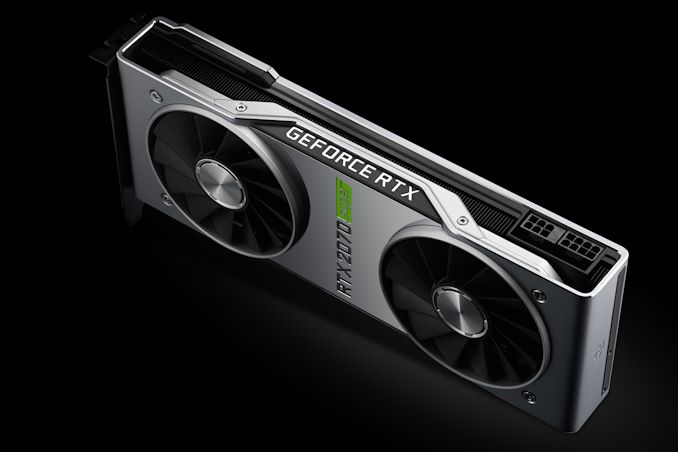
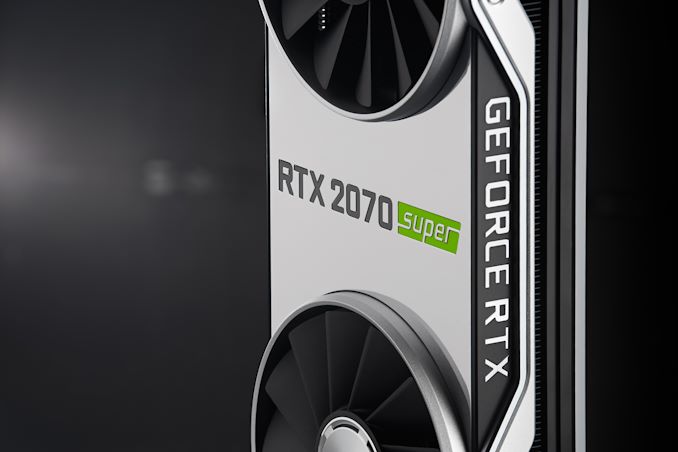
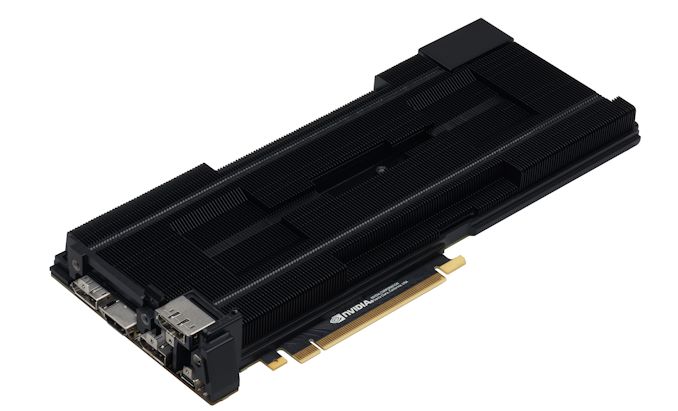

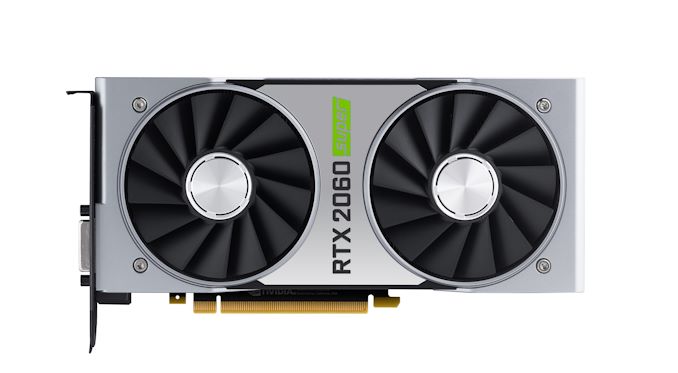
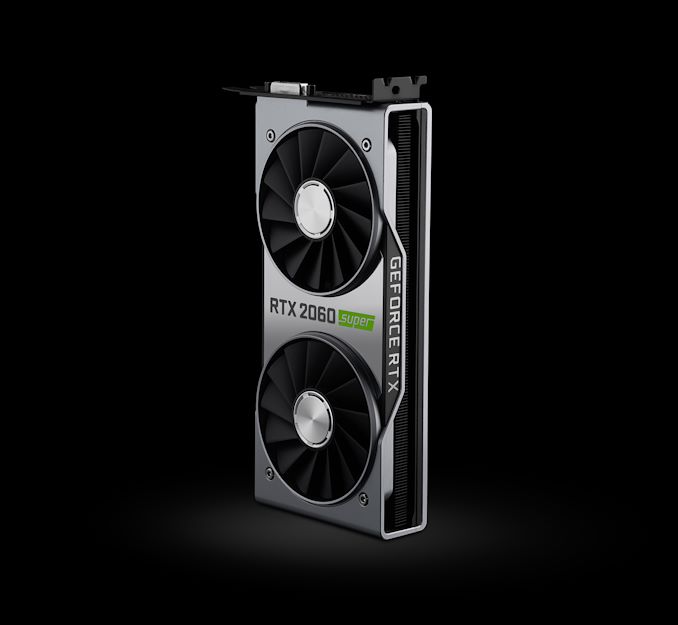









281 Comments
View All Comments
Phynaz - Tuesday, July 2, 2019 - link
Navi isn’t going to helptamalero - Wednesday, July 3, 2019 - link
different markets. supposedly VEGA is a compute strong card vs a pure gaming card of most of Nvidia lineup.imaskar - Tuesday, July 9, 2019 - link
Compute strong card without CUDA, which most of compute software relies on. Cool.sing_electric - Tuesday, July 2, 2019 - link
You might be right, but AMD's got a limited ability to lower the price on any of its Vega-based GPUs, partly because the HBMII memory on it is ridiculously expensive, and partly because the sheer wattage of these cards and chips means that they need to have pretty beefy card/cooling designs, etc.That's why we never really saw great deals on the Vega 56/64 even after the RTX cards came out with better performance/$ (or /w) or most consumer applications.
Meteor2 - Saturday, July 6, 2019 - link
And because cryptominers bought all of them.Dark42 - Tuesday, July 2, 2019 - link
Much more important are the prices for the 5700 (XT). If AMD's Computex performance figures are correct, we now have the situation:5700 XT at 449$ is ~5-10% faster then the 2060 Super at 399$.
5700 at 379$ beats is ~10-15% faster then the 2060 at 349$.
Also there is the game bundle situation in favor of nvidia.
With these prices, the 5700 makes no sense - for just 20$ more you get a much better 2060 Super.
Similar for the 5700 XT: 50$ more for just 5-10% is too much.
AMD must lower their prices, the question is by how much?
If AMD brings the 5700 XT down to 399$ and 5700 to 349$ then Nvidia is in a world of hurt.
Nvidia can't lower their prices too much because their chips are big and expensive and can't react with new chips anytime soon.
While AMD has room for a price war with the small 7nm chips and more Navi variants on the horizon.
The_Assimilator - Tuesday, July 2, 2019 - link
> Nvidia can't lower their prices too much because their chips are big and expensiveNVIDIA can lower their prices all they want because they've got cash in the bank. But they won't, firstly because they just did, and secondly because they already have the market sewn up. Even if Navi does undercut Turing pricing, the former still has to overcome the market dominance of the latter (and Pascal).
Meteor2 - Saturday, July 6, 2019 - link
This. The 5700 line is dead without a price-cut, immediately.Gastec - Wednesday, July 17, 2019 - link
"Nvidia can't lower their prices too much because their chips are big and expensive" . You seem to know quite a lot about how much money Nvidia spends on making their products. WikiLeaks or pure divine inspiration?just4U - Friday, July 5, 2019 - link
Amd won't drop the price on the Vega VII, it keeps selling out.. limited supplies or super (heh..) popular?